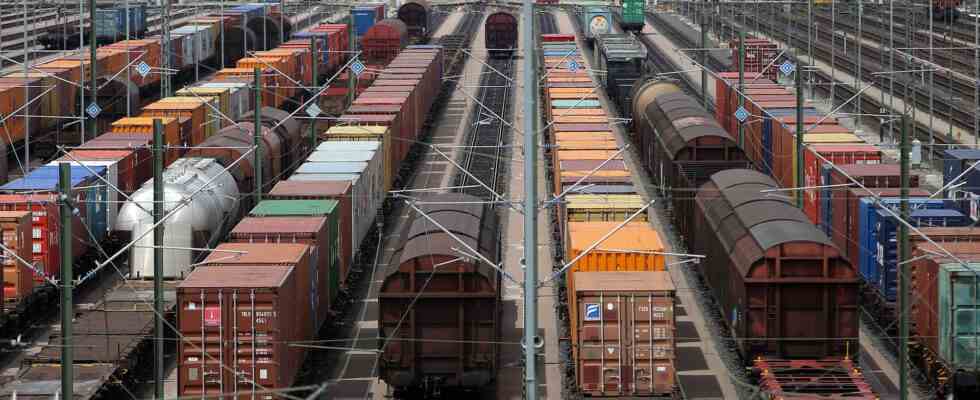Status: 08/25/2022 11:47 a.m
The federal government wants to get more freight traffic onto the rails, but the infrastructure is old, dilapidated and overburdened. There are many possible solutions.
Currently, 19 percent of freight traffic in Germany is by rail. By 2030 it should be 25 percent. This is what the traffic light federal government in Berlin is planning. A look abroad shows that this is possible: Austria, Sweden, Switzerland – in some cases even more than half of freight traffic is handled by rail.
However, experts are skeptical as to whether we will be able to do this. On the one hand, because the draft budget for the coming year does not show any increase in the contributions for rail. There are also many obstacles that previous government coalitions have not been able to solve.
Achieve a lot with small measures?
The rail commissioner of the federal government, Michael Theurer (FDP), dreams of many small measures that should bring a noticeable relief in the railway network: more electrification, more passing loops for freight trains, modern switches that can also be used at high speeds. But with the current structures in the authorities, this is not to be expected in the near future.
Time waster decision making
The interest group “Allianz pro Schiene” complains that the decision-making process in particular is taking too long. For example, when it comes to the electrification of existing routes: Then the responsible authorities start from scratch to create calculations – with the question of whether electrification is economically worthwhile.
According to Andreas Geißler from the “Alliance for Rail”, it is always worthwhile from a certain number of trains, as the past decades have shown. So far, however, no one in politics or higher administration has had the courage to set this as a legally secure threshold. According to the expert, this could save the authorities one to two years of work for each route.
Printed plans instead of a digital interface
Former railway manager Katharina Klemt-Albert teaches digital construction management at RWTH Aachen University. What frustrates her: Approval and agreement processes for railway projects are still carried out on paper. Many trades, such as architects or electrical engineers, have been planning digitally for a long time, but when the plans are to be merged, the interface is often missing. All plans are then printed out and laid side by side. That eats up time.
The approval processes in the authorities are also paper-based. Digital solutions are available that eliminate the need for paper from start to finish. But so far they have hardly been used. The hurdle is high: everyone involved, from planners, engineers, construction companies to the authorities, would have to be made fit and the IT would have to be upgraded. However, Katharina Klemt-Albert believes that consistent digitization would have the potential to radically accelerate planning and approval.

